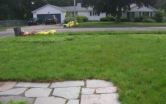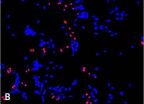(Press-News.org) Boston and Baltimore. Miami and Minneapolis. Phoenix and Los Angeles.
Fanned across the United States and in locations from coast to prairie to desert, what do these cities have in common?
How their human residents manage that icon of America, the urban lawn, or so hypothesized a team of scientists. However, when they conducted a study comparing residential landscapes in these six cities, they discovered that lawn care practices had fewer similarities than they expected.
Ecologists Colin Polsky of Clark University in Worcester, Mass., Peter Groffman of the Cary Institute of Ecosystem Studies in Millbrook, N.Y., and colleagues at 10 other institutions published results of their study in this week's issue of the journal Proceedings of the National Academy of Sciences (PNAS).
The project is funded by grants from the National Science Foundation's (NSF) MacroSystems Biology Program and Long-Term Ecological Research Program.
"The approach in this study can be used to test other ideas about how people who live in cities--now more than three-quarters of Americans--decide to manage their yards," says Henry Gholz, a program director in NSF's Division of Environmental Biology.
"This should open a new phase in the field of urban ecology."
The scientists researched the idea that urbanization produces similar human land management behaviors regardless of local environmental conditions.
This "homogenization hypothesis," as the team called it, was tested by reviewing responses to a lawn care survey of 9,500 residents in the six cities.
The researchers looked at whether there were similarities in lawn irrigation and lawn fertilization within each city in different neighborhoods, and across the cities in the same types of neighborhoods.
In the past year, 63 percent of respondents nationwide fertilized their yards and 79 percent watered them.
Although some urban lawn care patterns turned out to be different, others were similar.
In Los Angeles, for example, 66 percent of younger residents fertilized their lawns, while 73 percent of older residents did. In Minneapolis-St. Paul, the percentages were similar to those in L.A.: 68 and 76 percent, respectively.
What's right outside our doors--our lawns--may be one of the best indicators of where cities and towns need to address sustainability, the ecologists found.
Lawn fertilizer contains nutrients such as phosphorus and nitrogen that wash into waterways. These nutrients cause unwanted and ecologically detrimental blooms of algae, which can rob fish and other aquatic species of oxygen and degrade water quality.
How will U.S. citizens take care of their lawns--and the ecosystems of which they're a part--in the future?
"As our country transitions to urban sustainability planning, we need to know where, if anywhere, a common management approach is likely to work," says Polsky.
"In many cases, place matters for how people manage residential land. We started this project thinking that all urban Americans managed their residential land the same way: with lots and lots of water and fertilizer."
That wasn't always the case, according to the study's results.
"Responding to lawn care-related environmental challenges may require locally-tailored solutions in more cases than we thought," Polsky says.
Research on residential landscapes is critical to sustainability science, believes Groffman.
"Lawns not only cover a larger extent [of land] than any other irrigated 'crop' in the U.S.," the scientists write in their paper, "but are expected to expand in coming decades.
"The potential homogenization of residential lawn care has emerged as a major concern for carbon, nitrogen, phosphorus and water flows."
Suburban and urban lawns "occupy an extensive area in the U.S. and have effects--good and bad--on environmental quality, and on human quality of life," says Groffman.
"Yards are where our environmental knowledge, values and behavior are likely generated. The vast majority of human-environment interactions occur right in our yards."
INFORMATION:
-NSF-
Lawns across America: Is the US becoming 1 shade of green?
Study on lawn care in cities across the country finds similarities, differences important to urban sustainability
2014-03-12
ELSE PRESS RELEASES FROM THIS DATE:
Climate of Genghis Khan's ancient time extends long shadow over Asia of today
2014-03-12
Climate was very much on Genghis Khan's side as he expanded his Mongol Empire across northeastern Asia.
That link between Mongolia's climate and its human history echoes down the centuries, according to findings reported in this week's issue of the journal Proceedings of the National Academy of Sciences (PNAS).
But climate may no longer be the boon it was during the latter, wetter part of Genghis Khan's reign. The early years were marked by drought.
Mongolia's current drought conditions could have serious consequences for the Asia region's human and other inhabitants.
The ...
NASA sees remnants of Tropical Cyclone Hadi in So. Pacific
2014-03-12
Tropical Cyclone Hadi is now a remnant low pressure area in the Southern Pacific Ocean. NASA's Aqua satellite passed over the storm and captured a visible image of it on March 12.
When NASA's Aqua satellite flew over Hadi's remnants, the MODIS instrument aboard captured a visible image that showed the strongest thunderstorms associated with the low appeared south of the center of circulation. The center was located near 15.1 south and 156.1 east, about 585 nautical miles/673.2 miles/ 1,083 km west of Vanuatu.
The Joint Typhoon Warning Center or JTWC noted that animated ...
Skating to the puck or avoiding the penalty box in health care?
2014-03-12
LEBANON, NH (March 12, 2014) – In a Viewpoint published in the March issue of JAMA, Researcher Jeremiah Brown of The Dartmouth Institute for Health Policy & Clinical Practice and colleagues, Hal Sox and David Goodman, question whether the Centers for Medicare & Medicaid Services' use of financial penalties is the right tack for changing the behavior of hospitals.
The researchers examine the pros and cons of the hospital readmissions reduction policy in the Affordable Care Act as an example of similar CMS initiatives.
"Using financial incentives to change practice ...
The immune system's redesigned role in fighting cancerous tumors
2014-03-12
LOS ANGELES (March 11, 2014) – Researchers in the Cedars-Sinai Samuel Oschin Comprehensive Cancer Institute eradicated solid tumors in laboratory mice using a novel combination of two targeted agents. These two synergistic therapies stimulate an immune response, ultimately allowing solid tumors to act as their own cancer-fighting vaccine.
The study's findings, published in the journal Cancer Research, are the first to use these combined agents as an immune stimulator and may have the potential to kill cancerous cells in solid tumors, including some of the most aggressive ...
Fruit flies help uncover tumor-preventing protein complex
2014-03-12
A team of researchers from Duke-NUS Graduate Medical School have discovered a protein complex that disrupts the process known as dedifferentiation (1), known to promote tumor development.
Dedifferentiation (reversion) is a process that leads progenitor (2) or mature cells to become 'ectopic neural stem cells' which causes tumors. By detecting this protein complex, Duke-NUS researchers have shed light on a process that inhibits tumor development and gives hope for the discovery of therapies and treatments that target tumor prevention through this pathway.
Researchers ...
Researchers slow pancreatic cancer growth by blocking key enzyme
2014-03-12
A research team from Imperial College London has shown that blocking the function of an enzyme known as Hhat slows the growth and spread of pancreatic cancer, by preventing a protein called Hedgehog from stimulating nearby normal cells to help the cancer.
The study, funded by the UK research charity Pancreatic Cancer Research Fund, examined the role of Hedgehog, whose usual job is to send signals to cells in embryos to divide and grow into the correct body parts. But while Hedgehog usually switches off when the embryo is formed, in many cancers, including pancreatic, ...
Superior visual thinking may be key to independence for high schoolers with autism
2014-03-12
Researchers at UNC's Frank Porter Graham Child Development Institute (FPG) and UNC's School of Education report that teaching independence to adolescents with autism can provide a crucial boost to their chances for success after high school.
"We explored many factors that contribute to the poor outcomes people with autism often experience," said Kara Hume, co-principal investigator of FPG's Center on Secondary Education for Students with Autism Spectrum Disorders (CSESA). "It's clear that teaching independence to students with autism should be a central focus of their ...
Chronic pain research explores the brain
2014-03-12
New insights into how the human brain responds to chronic pain could eventually lead to improved treatments for patients, according to University of Adelaide researchers.
Neuroplasticity is the term used to describe the brain's ability to change structurally and functionally with experience and use.
"Neuroplasticity underlies our learning and memory, making it vital during early childhood development and important for continuous learning throughout life," says Dr Ann-Maree Vallence, a Postdoctoral Fellow in the University of Adelaide's Robinson Institute.
"The mechanisms ...
Surface characteristics influence cellular growth on semiconductor material
2014-03-12
Changing the texture and surface characteristics of a semiconductor material at the nanoscale can influence the way that neural cells grow on the material.
The finding stems from a study performed by researchers at North Carolina State University, the University of North Carolina at Chapel Hill and Purdue University, and may have utility for developing future neural implants.
"We wanted to know how a material's texture and structure can influence cell adhesion and differentiation," says Lauren Bain, lead author of a paper describing the work and a Ph.D. student in ...
Alpha-synuclein effects on dopaminergic neurons: Protection or damage?
2014-03-12
Alpha-synuclein is a principal component of Lewy bodies and Lewy neurites, which are pathologic hall-marks of Parkinson's disease. Alpha-synuclein is generally considered to play a role in synaptic activity, although its function remains largely unknown. Accumulative evidence has been shown that aggregated extracellular alpha-synuclein fibrils can be internalized in the cells and enhance the intracellular formation of protein inclusions, leading to cell death. Conversely, there is emerging evidence suggesting that alpha-synuclein has also neuroprotective effects. In one ...
LAST 30 PRESS RELEASES:
Study: Teens use cellphones for an hour a day at school
After more than two years of war, Palestinian children are hungry, denied education and “like the living dead”
The untold story of life with Prader-Willi syndrome - according to the siblings who live it
How the parasite that ‘gave up sex’ found more hosts – and why its victory won’t last
When is it time to jump? The boiling frog problem of AI use in physics education
Twitter data reveals partisan divide in understanding why pollen season's getting worse
AI is quick but risky for updating old software
Revolutionizing biosecurity: new multi-omics framework to transform invasive species management
From ancient herb to modern medicine: new review unveils the multi-targeted healing potential of Borago officinalis
Building a global scientific community: Biological Diversity Journal announces dual recruitment of Editorial Board and Youth Editorial Board members
Microbes that break down antibiotics help protect ecosystems under drug pollution
Smart biochar that remembers pollutants offers a new way to clean water and recycle biomass
Rice genes matter more than domestication in shaping plant microbiomes
Ticking time bomb: Some farmers report as many as 70 tick encounters over a 6-month period
Turning garden and crop waste into plastics
Scientists discover ‘platypus galaxies’ in the early universe
Seeing thyroid cancer in a new light: when AI meets label-free imaging in the operating room
Neutrophil-to-lymphocyte ratio may aid risk stratification in depressive disorder
2026 Seismological Society of America Annual Meeting
AI-powered ECG analysis offers promising path for early detection of chronic obstructive pulmonary disease, says Mount Sinai researchers
GIMM uncovers flaws in lab-grown heart cells and paves the way for improved treatments
Cracking the evolutionary code of sleep
Medications could help the aging brain cope with surgery, memory impairment
Back pain linked to worse sleep years later in men over 65, according to study
CDC urges ‘shared decision-making’ on some childhood vaccines; many unclear about what that means
New research finds that an ‘equal treatment’ approach to economic opportunity advertising can backfire
Researchers create shape-shifting, self-navigating microparticles
Science army mobilizes to map US soil microbiome
Researchers develop new tools to turn grain crops into biosensors
Do supervised consumption sites bring increased crime? Study suggests that’s a myth
[Press-News.org] Lawns across America: Is the US becoming 1 shade of green?Study on lawn care in cities across the country finds similarities, differences important to urban sustainability








